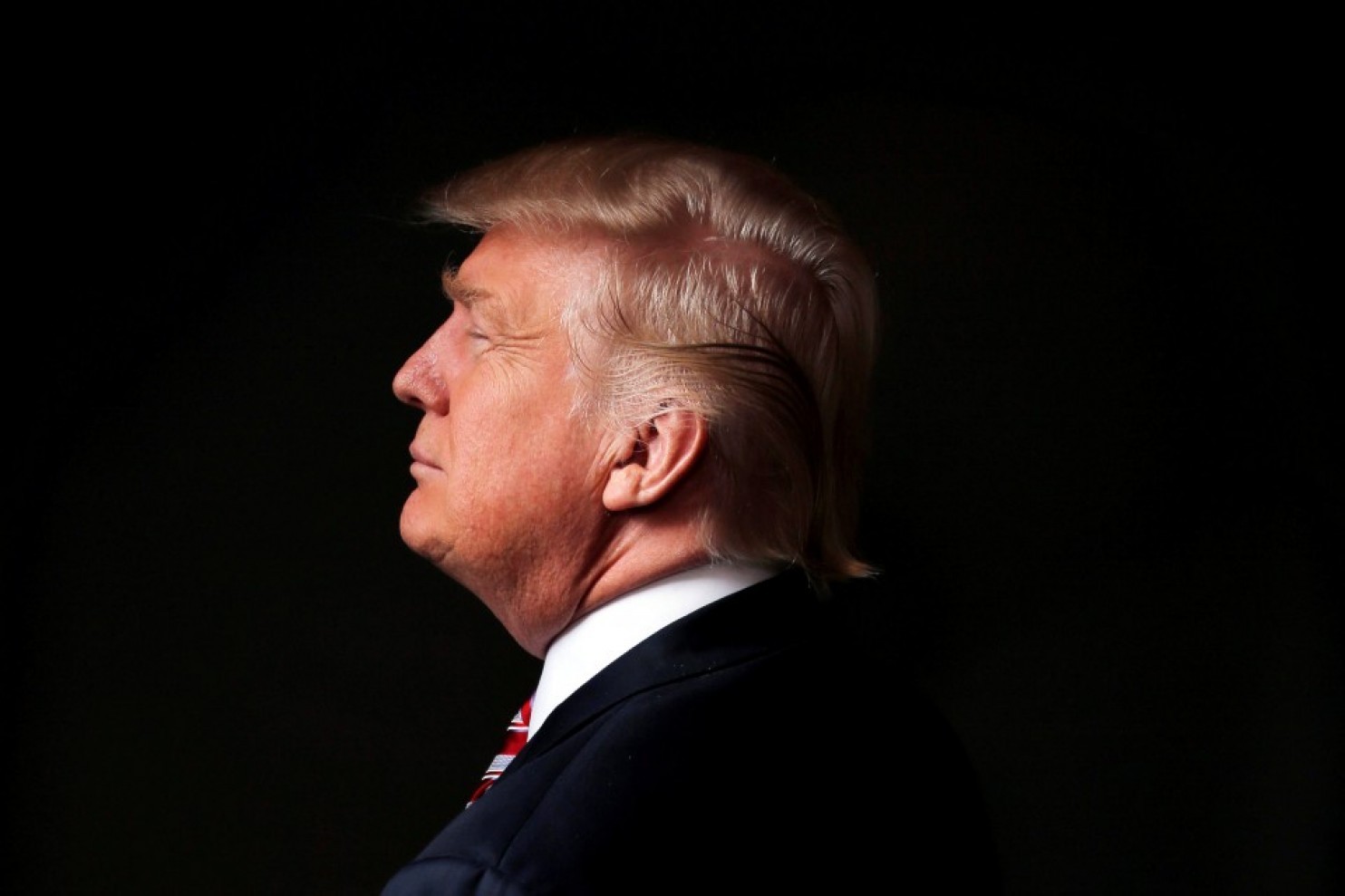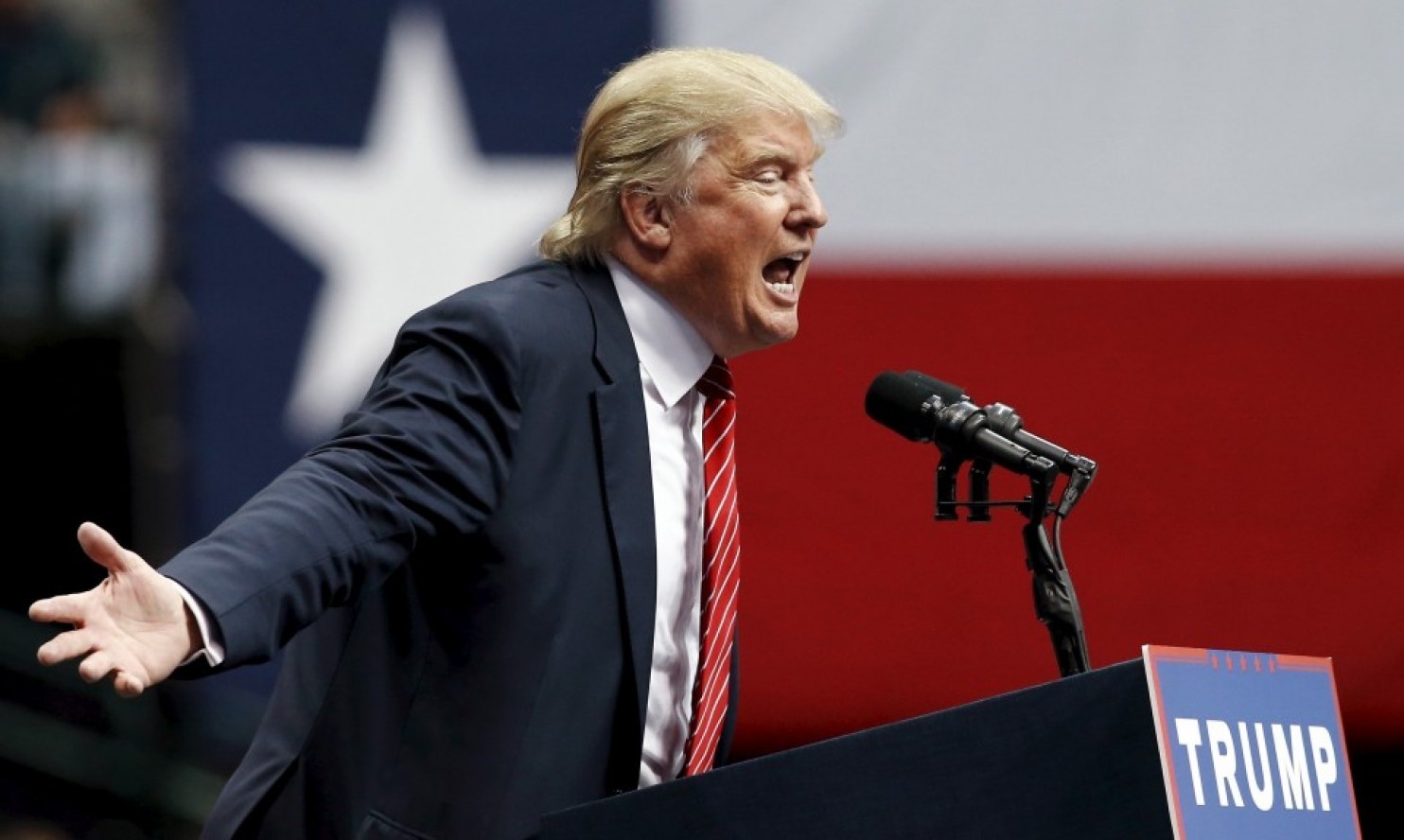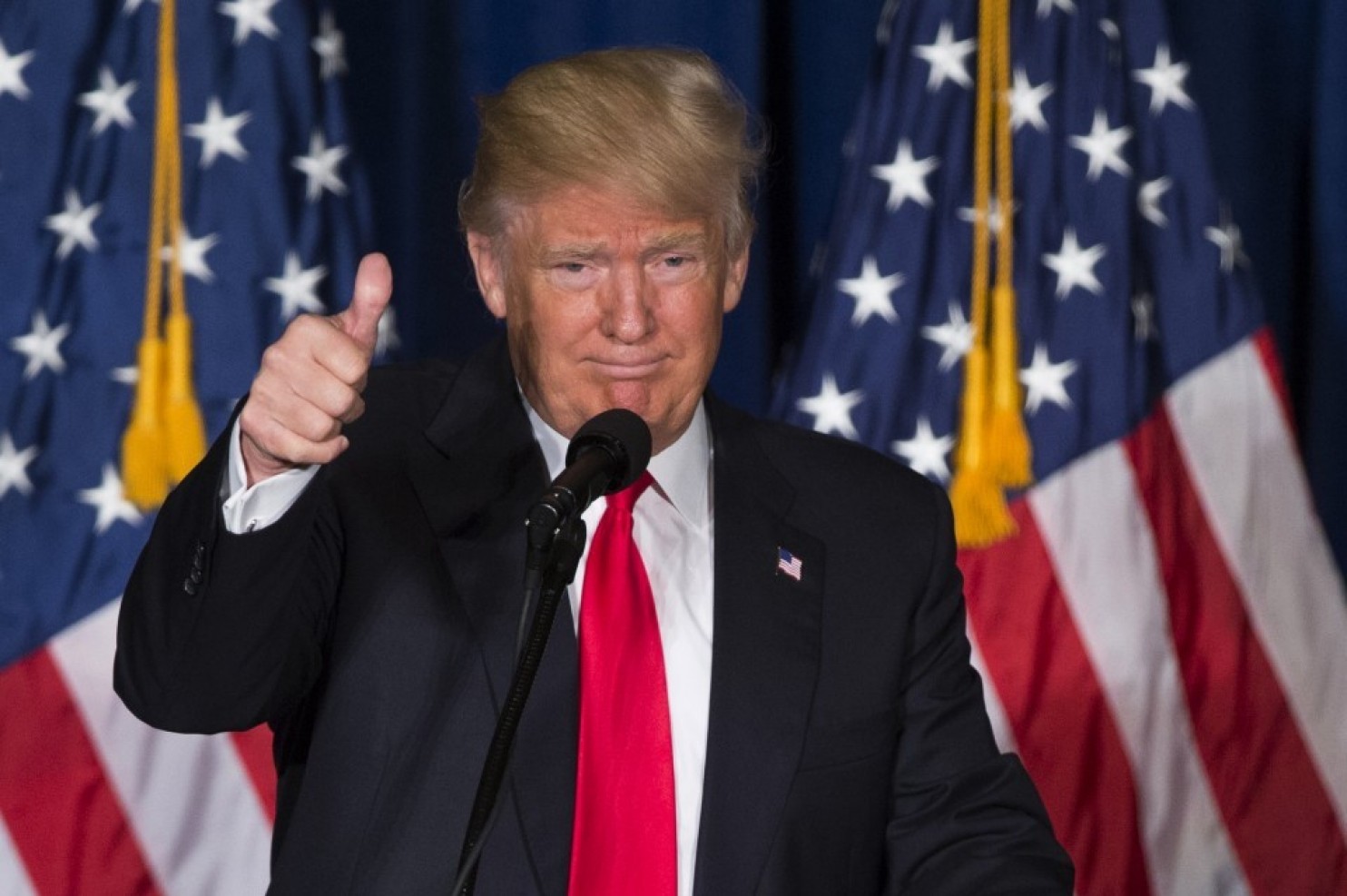
There is change, and then there is behaving like a master marketer who understands a slice of the American electorate well, saying what he thinks necessary to get elected.
When Donald Trump announced his plans to seek the White House, he alluded to a nonexistent Mexican government conspiracy to dispatch the criminal dregs of its society to the United States, and he promised to build a remarkable wall along the border the United States shares with Mexico and force the latter to pay for it.
By August, Trump began assuring reporters repeatedly that he was not only serious about deporting every undocumented immigrant in the United States — at least 11 million people — but sending their U.S.-born or U.S.-raised children and young adult progeny with them, too. In fact, Trump also thought there was good reason to repeal birthright citizenship, and he put that in his first policy paper.
Then came Wednesday, when a Trump surrogate, Rep. Chris Collins (R-N.Y.) — the very first member of Congress to sanction Trump's campaign, in fact — told a reporter with the Buffalo News something just a little different:
“I have called it a virtual wall. ... Maybe we will be building a wall over some aspects of it; I don’t know,” the Clarence Republican said of Trump’s proposed barrier to keep illegal immigrants and drugs from crossing the southern border.
And, he also said this:
“I call it a rhetorical deportation of 12 million people,” Collins said.
He then gestured toward a door in his Capitol Hill office.
“They go out that door, they go in that room, they get their work papers, Social Security number, then they come in that door, and they’ve got legal work status but are not citizens of the United States,” Collins said. “So there was a virtual deportation as they left that door for processing and came in this door.”
Collins added: “We’re not going to put them on a bus, and we’re not going to drive them across the border.”
That's what Collins said — not necessarily Trump himself. But it really amounts to only the latest and perhaps largest potential evolution of Trump's immigration policy plans. There have been lots of little and hard-to-describe tweaks along the way — almost as if Trump has formulated it on the fly. Let's review, shall we?
June 2015: A wall to stop criminals and rapists
“When Mexico sends its people, they're not sending the best. They're not sending you; they're sending people that have lots of problems, and they're bringing those problems," Trump said in a speech at Trump Tower in New York. “They're bringing drugs, they're bringing crime. They're rapists and some, I assume, are good people, but I speak to border guards and they're telling us what we're getting.”
Trump's proposed solutions: “I would build a great wall, and nobody builds walls better than me, believe me, and I'll build them very inexpensively. I will build a great, great wall on our Southern border and I will have Mexico pay for that wall, mark my words.”
Regarding the financing for that wall, Trump said: “I would force them [the Mexican government] because we give them a fortune. Mexico makes a fortune because of us. A wall is a tiny little peanut compared to that. I would do something very severe unless they contributed or gave us the money to build the wall.”
August 2015: Mixed signals on deportation
Trump released a policy paper that promises to triple the number of Immigration and Customs Enforcement (ICE) agents. The only mention of deportation comes in reference to gang members (see page 4). “All illegal aliens in gangs should be apprehended and deported.”
But Trump also spoke to NBC News about immigrant families, which include members with different legal statuses. “We’re going to keep the families together,” Trump said in an interview broadcast Sunday. “But they have to go.”
Then, Trump told a group of Alabama Republicans that the deportation of an estimated 11 million undocumented immigrants would take 18 months to two years to complete.
Oh, and before the month was over, Trump mused about the materials he would use to build a wall. It was kind of hard to follow if you aren't in the building trade, but most reads were that, in August, Trump had plans for a wall that would stretch 30 feet above ground.
September 2015: Round them up humanely, but let them come back legally
In an interview with CBS News, Trump told viewers his plans involve a “humane” roundup done in a “nice way.” But, there was also a modification here. Trump explained: “If they’ve done well, they’re going out and they’re coming back in legally.”

October 2015: Maybe don't wall off the whole border
Trump sent a tweet related to immigration that included several inaccurate claims.
Notice that illegal immigrants will be given ObamaCare and free college tuition but nothing has been mentioned about our VETERANS #DemDebate
— Donald J. Trump (@realDonaldTrump) October 14, 2015
Most undocumented immigrants are not eligible for Obamacare. Only individuals in need of emergency medical care can go to a hospital and receive it. This policy predates Obama. There is no federal program that grants illegal immigrants free college tuition. Even the group of U.S.-raised, young adult illegal immigrants known as "dreamers" are not eligible for any type of federal financial aid.
Undeterred, Trump told the audience watching one of the many Republican primary debates that his plans for a border wall were a little more modest than initially described. He would not bother to build over particularly rugged and hard-to-cross territory and focus on putting up a wall over about 1,000 miles of land frequently used by illegal immigrants. Natural barriers would protect the rest of the border.
Trump also now spoke about the wall as a 40- to 50-foot-tall project. So now, that's 1,000 miles long, 40- to 50-feet high.
During the same debate, Trump also seemed to reverse parts of his position on foreign workers, saying he agreed with Silicon Valley executives who want to see opportunities for foreign-born graduates of U.S. colleges to remain in the country and work.

November 2015: Mass deportation
Trump told reporters that he would form a “deportation force” to implement a mass removal of undocumented immigrants. This may have been a reference to his call to expand the number of ICE agents the country employs.
December 2015: Ban on Muslim immigration
Trump called for a “total and complete shutdown of Muslims entering the United States until our country's representatives can figure out what is going on” and issued a press release using just those words.
When news broke that U.S. immigration officials were gearing up for a series of raids aimed at detaining and deporting illegal immigrants, Trump took credit on Twitter.
Wow, because of the pressure put on by me, ICE TO LAUNCH LARGE SCALE DEPORTATION RAIDS. It's about time!
— Donald J. Trump (@realDonaldTrump) December 24, 2015
Does everyone see that the Democrats and President Obama are now, because of me, starting to deport people who are here illegally. Politics!
— Donald J. Trump (@realDonaldTrump) December 25, 2015
January 2016: A fear-infused campaign ad, and more mass deportation
In January, the Republican front-runner released his first television commercial. Its focus: immigration and terrorism. It purported to show people streaming across the U.S.-Mexico border but instead used footage of people crossing a border in Morocco.
The Trump campaign said that the point of the footage was to draw attention to the dangers created by unbridled immigration and unprotected borders. In explaining the ad, Trump said, “The world is laughing at us, at our stupidity,” he said. “It’s got to stop. We’ve got to get smart fast — or else we won’t have a country.”
Trump then told the CNN viewers that he would like to emulate a 1954 mass deportation of Mexican immigrants that also mistakenly removed a number of Mexican American U.S. citizens from the country.
February 2016: Deportation is part of negotiation process
Stephen Miller, a senior policy adviser to the Trump campaign, told the Daily Caller that Trump remained committed to increasing the number of ICE agents to put his deportation plans in action. Miller also said a Trump administration would implement an immigrant and visitor tracking system using biometrics. Biometric data — fingerprints, facial recognition software, iris scans and the like — are already gathered from all legal immigrants and long-term visa holders.
That same month, BuzzFeed reported that during an off-the-record portion of a conversation with the New York Times, Trump described his deportation plan as a negotiating tactic or opening political bid through which he was sure that he and his voters could get some of what they want.
The wall idea also drew more attention when Trump first described the wall as a 35-to-40-foot-tall project. But when a reporter pointed out that Mexican officials have said the country will not be paying for any wall, Trump said, “the wall just got higher.” No details included. But never fear, a few days later Trump put the planned wall's height at 45 feet.
But February was a busy month in wall talk, and Trump eventually also suggested a 55-foot wall.
Trump told viewers of a Fox News debate that he changed his position on visas for highly skilled and U.S.-educated immigrants. However, a few days later, Trump said his change of opinion does not include the H-1B visa program, the means by which many highly skilled foreigners enter the United States and legally work. Trump said that H-1B visa holders were taking jobs that should belong to Americans and that employers should always — no exceptions — attempt to hire domestically. He also admitted using the program to staff his own businesses but described it as very bad for American workers.

April 2016: Deportation, yes. Return legally, yes.
During an April question-and-answer session on the "Today" show, Trump told a woman with Ecuadoran relatives who have lived in the United States for 25 years, are illegal immigrants and have no legal option to adjust their status that he would deport them but create a means or option for their legal return. So deportation, yes. And yes to a return for some of these same people via a legal option the Trump administration would create.
Of course, American voters will have to decide what all that means.


